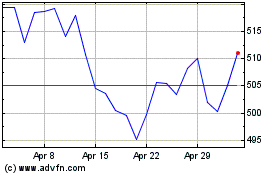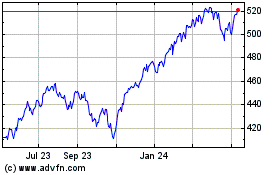Whether youU+02019re just
starting your investing journey or have years of experience,
exchange-traded funds (ETFs) might be a suitable addition to your
portfolio, depending on your investment goals and risk appetite,
according to experts.
ETFs function as a container for
individual assets such as stocks and bonds, much like mutual funds.
However, they often offer greater tax efficiency and lower expense
ratios than mutual funds, which has led many investors to prefer
them.
"Over the past 15 to 20 years,
ETFs have evolved significantly," noted Barry Glassman, a certified
financial planner and founder and president of Glassman Wealth
Services in McLean, Virginia, who is also part of CNBC’s Financial
Advisor Council.
In 2022, a notable shift
occurred, with investors withdrawing over $900 billion from mutual
funds and redirecting approximately $600 billion into ETFs, as per
Morningstar. This marked the largest net difference
recorded.
Benefits of ETF investing
Amidst this trend, CNBC’s FA
Council experts share their insights on integrating ETFs into
client portfolios.
One major advantage of ETFs,
especially in brokerage accounts where capital gains and dividends
are taxed annually, is their tax efficiency. Unlike certain mutual
funds that distribute capital gains at year-end, most ETFs do not.
"This is a key reason why ETFs are attractive," Glassman explained.
Cathy Curtis, a CFP and founder of Curtis Financial Planning in
Oakland, California, also emphasizes their role in managing tax
impacts, particularly in high-tax states like
California.
ETFs also play a vital role in
diversifying portfolios and balancing risk and reward. They can be
part of a core portfolio, with ETFs tracking broad-based indices
like the
S&P 500 providing
stability, as Kamila Elliott, an Atlanta-based CFP and co-founder
and CEO of Collective Wealth Partners, uses them.
On the other hand, ETFs in
satellite portfolios offer diversification opportunities, reducing
exposure to specific asset risks. Marguerita Cheng, a CFP and CEO
of Blue Ocean Global Wealth in Gaithersburg, Maryland, cited a
client interested in the video game industry who found a suitable
video game ETF.
While ETFs in such specialized
areas can be less risky than individual stocks, they still carry
the potential for significant losses and gains, given the
unpredictability of industry winners, including in sectors like
video games.
Millennials are bullish on bond-focused
ETFs
Millennials are showing a
stronger preference for bond exchange-traded funds (ETFs) than
older generations, a trend experts caution may not be the most
beneficial strategy. According to a Charles Schwab survey,
millennials, born from the early 1980s to the mid-1990s, have
allocated an average of 45% of their investment portfolios to fixed
income. This figure is notably higher than the allocations of
Generation X (37%) and baby boomers (31%).
Furthermore, 51% of millennials
are planning to invest in fixed-income ETFs in the coming year,
exceeding the 45% of Gen X and 40% of boomers. However, this
conservative approach might not align well with the typically
longer investment horizon of millennials, explains Ted Jenkin, a
certified financial planner and CEO and founder of oXYGen Financial
in Atlanta.
With more time to invest,
millennials can generally afford, and should perhaps consider,
taking on more risk by favoring stocks, which have historically
outperformed bonds over extended periods, notes Jenkin, a member of
CNBC’s Advisor Council.
Jenkin advises that
millennialsU+02019 current 45% bond allocation might be excessively
conservative. He suggests using the "Rule of 120" as a basic
guideline: subtract your age from 120 to gauge an appropriate stock
allocation. For instance, a 35-year-old would ideally have 85% of
their portfolio in stocks and the remaining 15% in fixed
income.
Experts believe several
factors contribute to millennials’ conservative investment stance.
Emotional factors, like the financial scars from the 2008 crisis or
the dot-com bubble, could influence their decisions. David Botset,
head of strategy and product at Schwab Asset Management, suggests
these challenging experiences during formative years might lead
millennials to be more cautious investors.
"Loss aversion bias," a tendency
to prioritize avoiding financial loss, may also play a role.
However, this can be detrimental in the long run as stocks
typically drive portfolio growth. Holding too few stocks relative
to oneU+02019s investment period could mean missing out on
potential retirement income.
Additionally, Jenkin points out
that current high-interest rates make bonds and cash more
attractive, offering safer investments with decent returns.
However, he cautions that despite the appeal of a 5% annual return
from safer fixed-income investments, bonds have generally
underperformed stocks over the long term.
SPDR S&P 500 (AMEX:SPY)
Historical Stock Chart
From Mar 2024 to Apr 2024

SPDR S&P 500 (AMEX:SPY)
Historical Stock Chart
From Apr 2023 to Apr 2024
